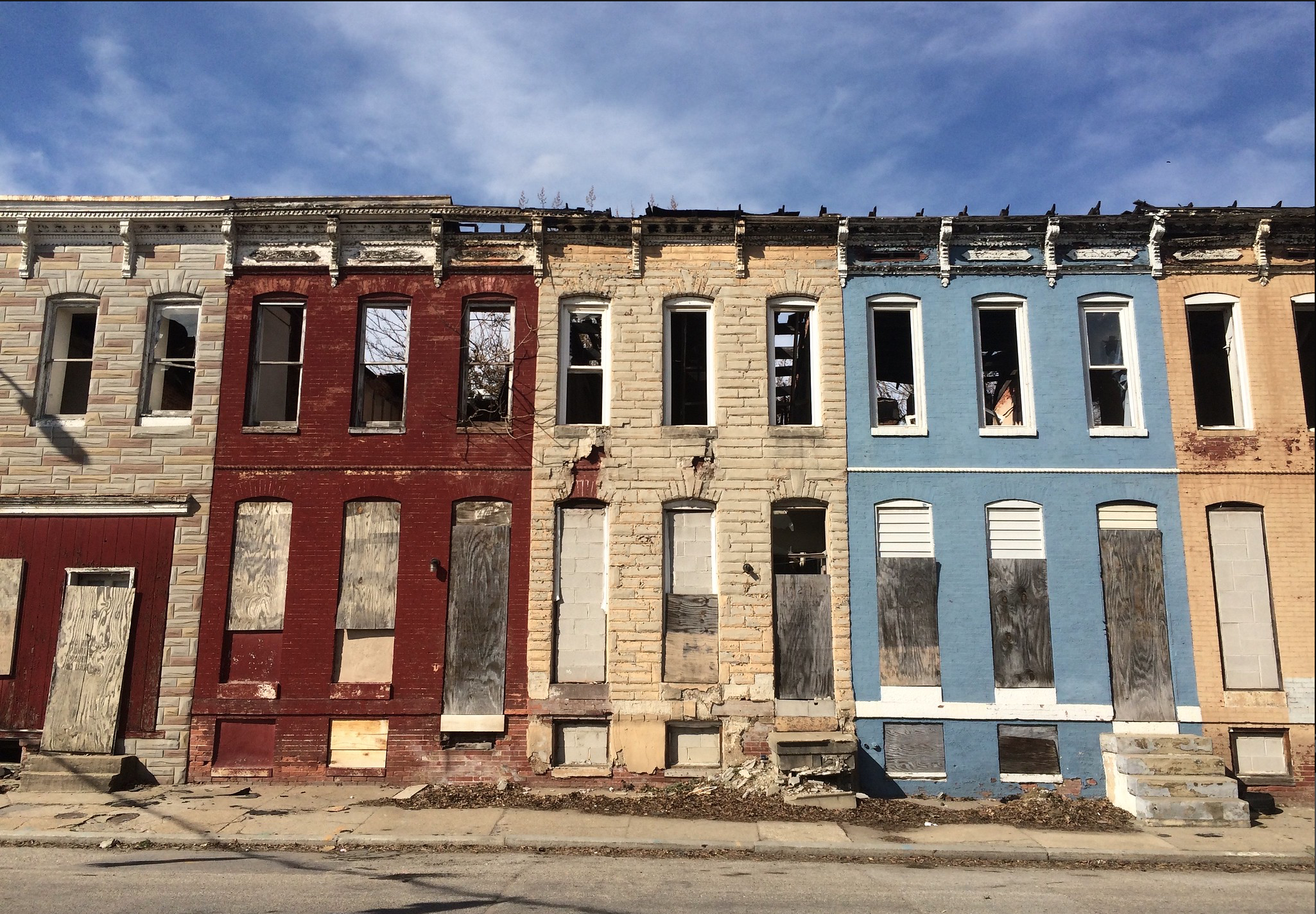Funded by the Annie E. Casey Foundation
Background
Although some Baltimore neighborhoods have experienced recent private and public investments, there has been little, in-depth empirical research on the supply and demand-side processes happening within these communities. In response, the Who is Moving In? team at the Poverty and Inequality Research Lab has carried out a study examining: 1) who is moving into renovated housing within neighborhoods experiencing new investment; 2) processes of neighborhood change – including the physical and social transformation of communities – that contribute to divestment or reinvestment; and 3) the role of policy interventions in attracting new residents and new investments in transitioning and struggling neighborhoods.
Within East and Central Baltimore, our multi-method approach includes: 1) systematic social observations, documenting patterns of divestment and reinvestment by recording the condition of approx. 15,000 housing parcels and 820 neighborhood blocks; 2) in-depth interviews with over 400 homeowners, renters, landlords, developers, school representatives and other key informants; 3) ethnographic observations of over 50 community association meeting and other local events; and 4) surveys of residents living in newly renovated housing.
Key Findings from East Baltimore:
- Developer strategies – including their approach to social problems – have varied across neighborhoods and have inevitably been shaped by public and private incentives.
- Ongoing block-level processes influence the promise of current and future investments
- Although certain neighborhoods have attracted new, higher-income residents, our preliminary survey analysis indicates the majority of residents moving into renovated housing across East Baltimore have been legacy residents from the City of Baltimore.
- Policy incentives have motivated legacy and newcomer residents to move to East Baltimore
- Renovated housing is not the main driver of why families are settling in upgraded units in East Baltimore.
- Civic engagement can build community, but also create exclusion, which can undermine the possibility of mixed-income neighborhoods
- School leaders’ optimism for reinvestment stemmed from their desire to help youth overcome barriers that linger from long-term neighborhood divestment
- Through an analysis of property records, we report on predatory real estate transaction patterns that have caused neighborhood divestment.
- Systematic social observations in 2017 show there has been some increase in reinvestment in East Baltimore, although the percent of habitable residential units has remained steady from 2015.
Publications
DeLuca, Stefanie, and Jang‐Trettien, Christine. September 3, 2020. “Not Just a Lateral Move”: Residential Decisions and the Reproduction of Urban Inequality. City & Community, Volume 19, Issue 3, Pages 451-488. https://doi.org/10.1111/cico.12515
Philip ME Garboden and Christine Jang-Trettien. 2018.” There’s Money to Be Made in Community: Real Estate Developers, Community Organizing, and Profit-making in Shrinking Cities” Journal of Urban Affairs. https://doi.org/10.1080/07352166.2018.1465346
Presentations
Brianna Bueltmann and Philip ME Garboden. 2017. “Family Landlords: Kin Ties, Real Estate Investment, and Survival in High Poverty Neighborhoods.” Eastern Sociological Society.
Philip ME Garboden. 2017. “Re-Negotiating Community: Divergent Pathways of Neighborhood Change in Baltimore, MD.” Eastern Sociological Society.
Christine Jang and Philip ME Garboden. 2016. “Making of Collective Efficacy: How Private-Sector Developers Activate Social Control After Neighborhood Revitalization.” Eastern Sociological Society.
Philip ME Garboden and Christine Jang. 2016. “ ‘There’s Money to be Made in Community:’ Real Estate Developers as Brokers of Social Connections.” American Sociological Association.
Christine Jang. 2017. “Homeownership in Distressed Neighborhoods.” American Sociological Association & Urban Affairs Association.
Stefanie DeLuca and Christine Jang. 2019. “Real Estate Practices and Neighborhood Vulnerability: Why It’s Difficult For High Poverty Communities to Stabilize.” Invited paper at Georgetown University.
Jennifer Cossyleon and Natalie Schock. 2019. “Enrollment and Neighborhood Brokers: School Leaders in Baltimore City Schools.” Eastern Sociological Society.
Christine Jang-Trettien and Stefanie Deluca. 2019. “Real Estate Practices and Neighborhood Vulnerability: Why It’s Difficult For High Poverty Communities to Stabilize.” Presented at the Sociology of Housing Conference, Georgetown University. October 4th. Washington D.C.
Christine Jang-Trettien. 2019. “Social Structure of the Informal Housing Market.” Presented at the Community and Urban Sociology 2019 ASA Pre-Conference, New York University. August 9. New York, NY.
Natalie Schock and Jennifer Cossyleon. 2019. "Enrollment and Neighborhood Brokers: School Leaders in Baltimore City." Presented at the Eastern Sociological Society, March 17. Boston, MA.
Christine Jang-Trettien. 2018. “Social Structure of the Informal Housing Market.” Presented at the Princeton Housing Conference, Princeton University. October 18. Princeton, NJ.
Christine Jang-Trettien. 2017. “Homeownership in Distressed Neighborhoods: Purchasing Property within the Modern-Day Redline.” Presented at the Urban Affairs Association Annual Meeting. April 20. Minneapolis, MN.
Christine Jang-Trettien. 2017. “Cash, Gifts, and Seller-Financing Deals: How and Why People Become Homeowners in Distressed Neighborhoods.” Presented at the American Sociological Association Annual Meeting, Regular Session. August 12. Montreal, Canada.
Philip ME Garboden and Christine Jang. 2016. “There's Money to be Made in Community: Real Estate Developers as Brokers of Social Connections.” Presented at the American Sociological Association Annual Meeting, Regular Session. August 24. Seattle, WA.
